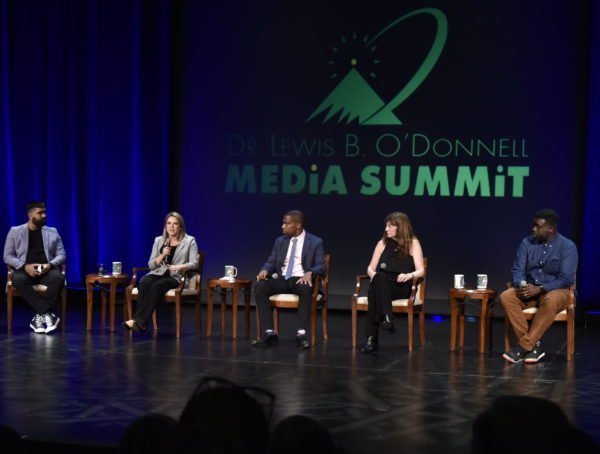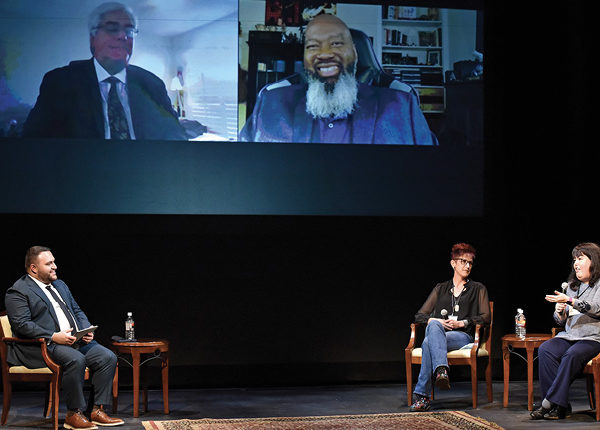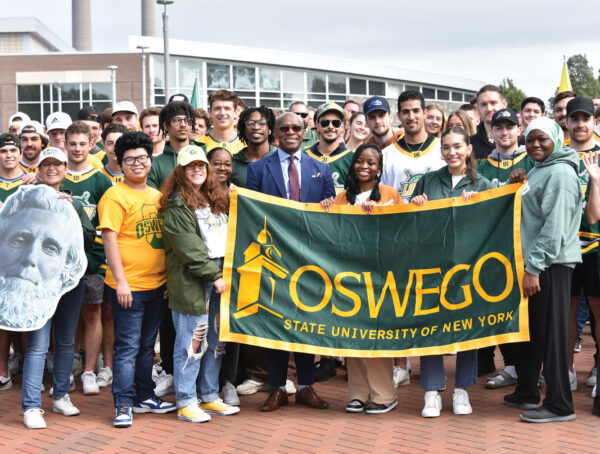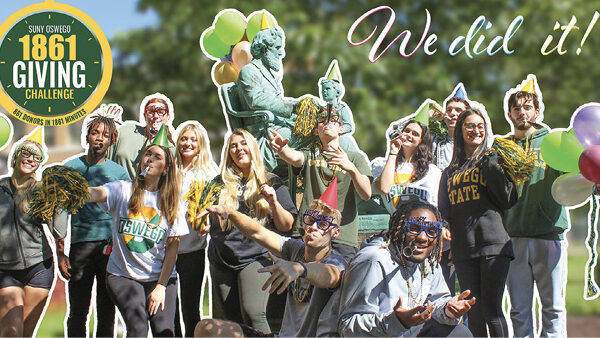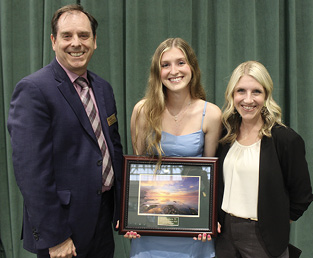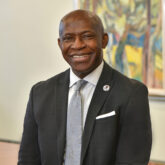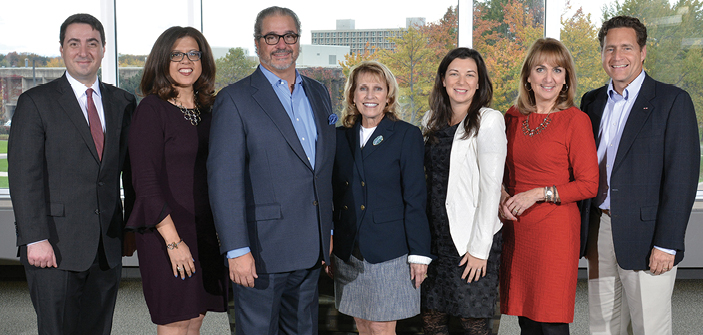
Jim Russell ’83
Watch the 13th Annual Dr. Lewis B. O’Donnell Media Summit
The 13th Annual Dr. Lewis B. O’Donnell Media Summit began with some ground rules about civil discourse.
“We’re not all going to agree today,” said panel moderator Benita Zahn ’76, WNYT-TV news anchor in Albany, N.Y. “That’s OK. What matters is that we listen and that we attempt to understand and exchange ideas in a way that’s thoughtful and respectful, and in many ways, that is at the heart of the topic of today’s summit.”
The topic—“Facts, Fiction, Politics and the News”—pulled together a panel of accomplished media professionals to discuss the increasingly volatile relationship between politicians, the press and the audiences they serve.
This year’s panelists, pictured above with summit founder Louis A. Borrelli Jr. ’77 (third from left) and college President Deborah F. Stanley (center), were from left:
• Steven Portnoy, CBS News radio correspondent;
• Trudy Perkins ’93, deputy chief of staff and communications director for U.S. Rep. Elijah Cummings (see related story on page 35);
• Kristin Donnelly, supervising producer of CNN’s The Lead with Jake Tapper;
• Zahn, panel moderator; and
• Bob Lonsberry, radio host and conservative political commentator on WHAM-AM in Rochester, N.Y., and WSYR-AM in Syracuse, N.Y.
After introducing the panelists and laying the ground rules, Zahn got the conversation started by asking how the country can “get to civil discourse, as the volume is so loud in every part of the conversation.”
Portnoy pointed out that the United States has gone through other periods in its history when the “civil discourse has been as loud, or louder than it is today,” specifically mentioning the 1860s and 1960s. One distinguishing factor for Portnoy is that government officials are speaking up against members of their own party for their nationalist fervor and amped up rhetoric.
“I think that is rather striking and that history will note it,” he said.
Perkins said she sees a benefit in the volume of discourse.
“People who would normally stay out of the political process—who would normally stay out of the conversation—are getting in the conversation,” she said, noting that many town hall meetings today are overflowing with constituents.
The important part of any civil discourse is to “try to remember what you’re fighting for versus who you are fighting against,” she said. “When both sides come to that conclusion—that I’m not here because I’m fighting against you, I am here because this issue is important to me and this is why—I think that helps the civil dialogue.”
Lonsberry agreed with Perkins and took it a step further, saying the country was founded by passionate believers who didn’t back down and who were motivated by “love of country, not hate of others.”
Donnelly pushed the question of volume back to the consumers of news—that their views, shares, comments and attention drive the news and the rhetoric.
The panelists also dissected the concepts of bias and objectivity of media outlets as well as the notion of “fake news.”
Several panelists said that Americans can consume news in its purest forms by watching live video streams from the White House briefing room or the floor of the U.S. Senate and interpreting the statements and discussions for themselves. Thanks to technological advancements, everyone can be the journalist, photographer and publisher of news, Portnoy said.
But the panelists said, realistically, most people don’t have the time to watch all of these discussions unfold for themselves. Instead, they advised audience members to be smart consumers of news who vet their sources and seek both sides of a story from at least two news sources.
Following the discussion, audience members asked questions of the panelists ranging from how do they defend themselves from attacks of being called “fake news” to how can news consumers determine if a source is credible.
Zahn closed by encouraging news consumers to do what they would do at a doctor’s office.
“Go and get a second opinion,” she said. “From a different practice.”
In addition to the Media Summit’s distinguished panel of industry professionals, recent alumni returned to campus to speak to and network with current students at a Career Connectors event in the Hewitt Union Ballroom.
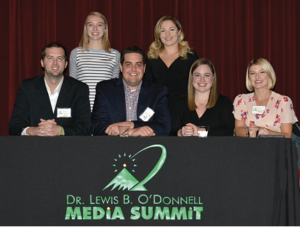
The 2017 Career Connectors, pictured left with student moderators (standing from left) Taylor Ksiazek ’18 and Abigail Buttacavoli ’19, were from left:
· Brady Farkas ’12, the program director and an on-air host at 101.3 ESPN Radio, which serves the Burlington, Vt. – Plattsburgh, N.Y., market;
· Tom Murphy ’14, an associate project manager at Partners + Napier, an ad agency based in Rochester, N.Y.;
· Maeghan Roberts ’15, the communications coordinator for New York State Assemblyman Michael P. Kearns in Buffalo, N.Y.; and
· Kara Vormwald ’15, the host and producer of Around the Tiers, which airs weekdays on WBNG-TV, the CBS affiliate in Binghamton, N.Y. Viewers in Greater Binghamton know Vormwald as Kara Conrad—her on-air name.
—Margaret Spillett
View the full photo gallery here
The Media Summit was founded in 2005 through the generosity of media pioneer Louis A. Borrelli Jr. ’77, now chief executive officer of Digicel Group’s Home and Entertainment Division. In 2007, Al Roker ’76, weatherman and host of NBC’s Today show, provided additional funding to rename the summit in memory of longtime professor Dr. Lewis B. O’Donnell, a seminal figure in the college experiences of Borrelli and Roker.
You might also like
More from Campus Currents
University Celebrates Third Annual Founder’s Weekend
University Celebrates Third Annual Founder’s Weekend Several hundred members of the Laker community gathered together on campus to learn about the …
SAVAC Captain, Biology Major Named 2023 Outstanding Senior Award Winner
SAVAC Captain, Biology Major Named 2023 Outstanding Senior Award Winner Shannon Harris ’23, a biology major from Webster, N.Y., was selected …







